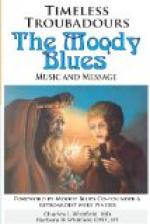NOTES
CHAPTER I
1. See maps at the end of Groeber’s Grundriss, vol. i.
2. De Vulg. El. I., 8: alii oc, alii oil, alii si affirmando loquuntur, and Vita Nuova, xxv. Dante also knew the term provincialis.
3. Boethius. F. Huendgen, Oppeln, 1884. For Sainte Foy d’Agen, see Romania xxxi., p, 177 ff.
4. P. Meyer in Romania v., p. 257. Bedier, Les chansons de Croisade, Paris, 1909, p. 16.
5. See P. Maus, Peire Cardenals Strophenbau, Marburg, 1884.
6. See Jeanroy, Origines, etc.
CHAPTER II
7. Provencal has also the feminine joia with the general meaning of “delight.”
8. See Stimming’s article in Groeber’s Grundriss.
9. Raynouard, Les Troubadours et les Cours d’Amour, Paris, 1817; see also Diez, Ueber die Minnehoefe, Berlin, 1825. Pio Rajna, Le Corti d’Amore, Milan, 1890.
10. Annales du Midi, xix. p. 364.
11. Die provenzalische Tenzone, R. Zenker, Leipsic, 1888.
CHAPTER III
12. Girart de Roussillon, translation by P. Meyer, Paris, 1884: see also Romania, vii. Diplomatic copies of the MSS. in Romanische Studien V. Le Roman de Flamenca, P. Meyer, Paris, 1901.
13. J. B. Beck, Die Melodien der Troubadours, Strasburg, 1908. La Musique des Troubadours, Paris, 1910, by the same author, who there promised a selection of songs harmonized for performance: this has not yet appeared. See also Quatre poesies de Marcabrun, Jeanroy, Dejeanne and Aubry, Paris, 1904, with texts, music, and translations.
14. Schindler, Die Kreuzzuege in der altprovenzalischen und mittelhochdeutschen lyrik., Dresden, 1889. K. Lewent, Das altprovenzalische Kreuzlied, Berlin, 1905.




